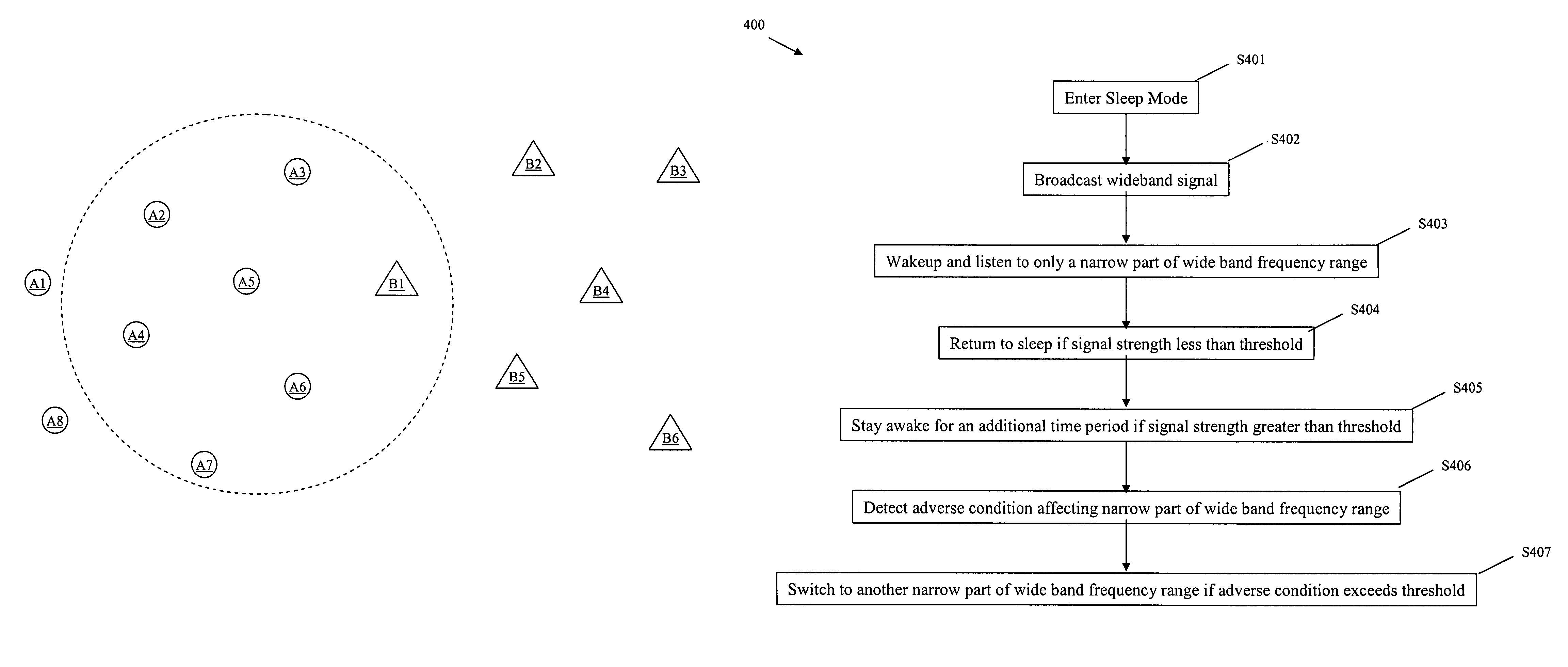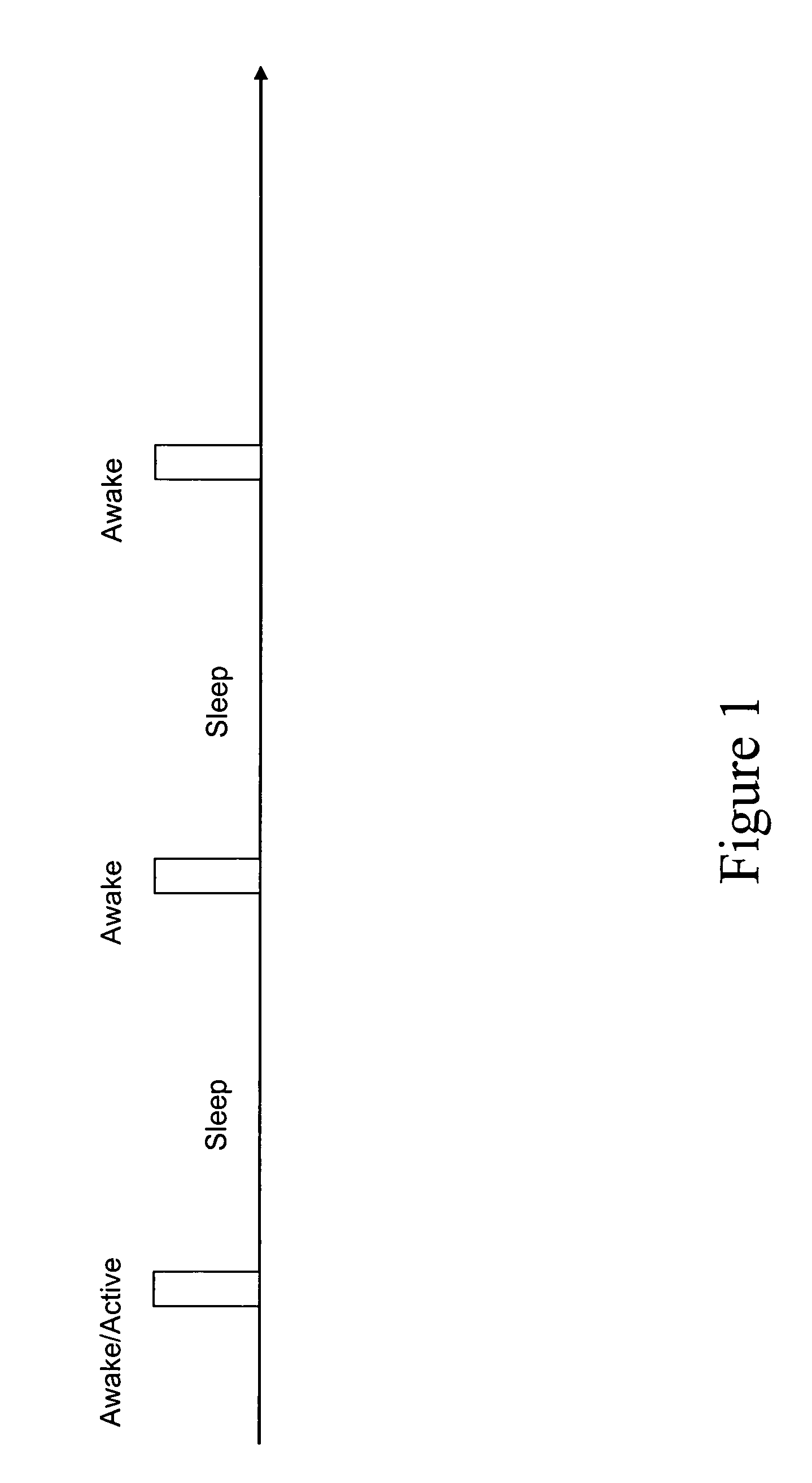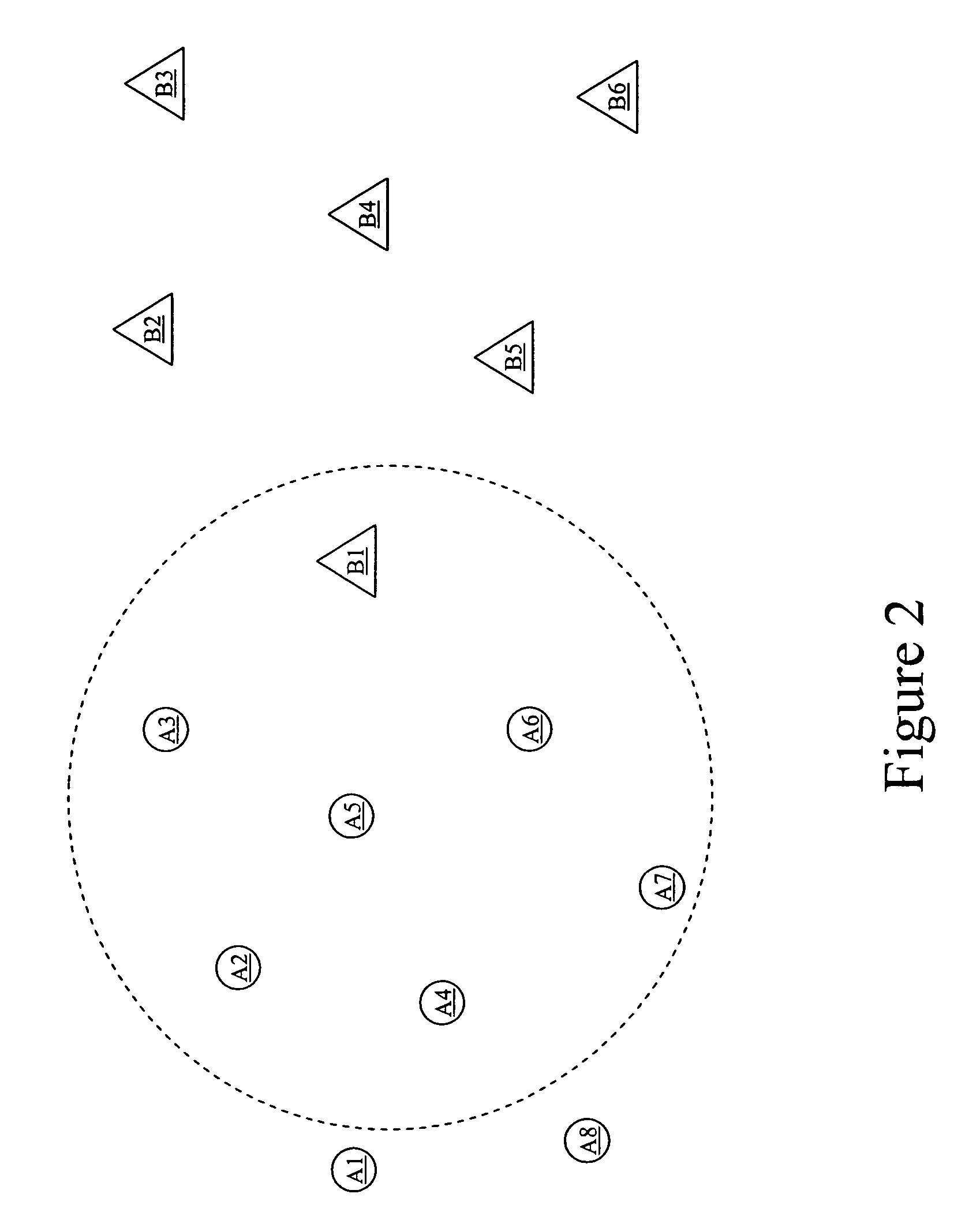Method and system employing wideband signals for RF wakeup
a wideband signal and wakeup technology, applied in the field of methods and systems employing wideband signals for rf wakeup, can solve the problems of unnecessary wakeup of nodes, additional overhead for the network, and needing additional energy resources, and achieve the effect of greater flexibility
- Summary
- Abstract
- Description
- Claims
- Application Information
AI Technical Summary
Benefits of technology
Problems solved by technology
Method used
Image
Examples
Embodiment Construction
[0034]FIG. 2 shows an exemplary configuration 200 of two partially overlapping exemplary wireless mobile networks A and B. The exemplary wireless sensor network A includes eight network nodes A1 to A8 represented in circular form. The exemplary network B includes six network nodes B1 to B6 represented in triangular form. Each of the eight network nodes A1 to A8, and each of the six network nodes B1 to B6, may communicate in a wireless manner on one or more wireless frequency channels, and each may include, for example, sensors and / or actuators, and may move relative to one another in a mobile fashion.
[0035]FIG. 3 shows an exemplary network node 300 according to the present invention. The exemplary network node 300 may be, for example, a mobile wireless sensor node. That is, the exemplary network node 300 may be free to move in a non-stationary manner, be equipped with one or more sensors / actuators, and may be constrained to operate on limited energy resources. The exemplary network ...
PUM
 Login to View More
Login to View More Abstract
Description
Claims
Application Information
 Login to View More
Login to View More - R&D
- Intellectual Property
- Life Sciences
- Materials
- Tech Scout
- Unparalleled Data Quality
- Higher Quality Content
- 60% Fewer Hallucinations
Browse by: Latest US Patents, China's latest patents, Technical Efficacy Thesaurus, Application Domain, Technology Topic, Popular Technical Reports.
© 2025 PatSnap. All rights reserved.Legal|Privacy policy|Modern Slavery Act Transparency Statement|Sitemap|About US| Contact US: help@patsnap.com



